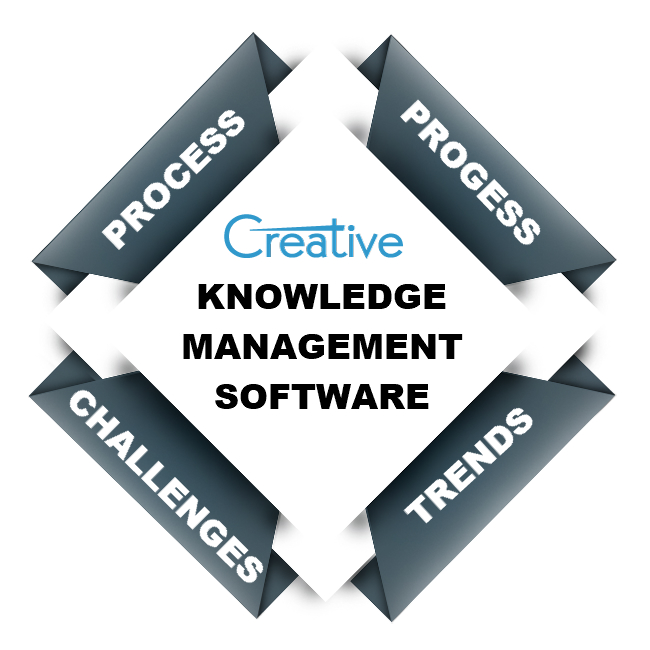
Why is Knowledge Management Important for Collaboration & Success?

Knowledge is power. We all agree to this. And we all are acquainted with the truth of it in our everyday personal and professional lives. Yet, recently it has become clear that worldwide, we’re still lacking behind in terms of technological and ‘high-end’ skills that many businesses and big organisations require for success.
Naturally, it takes a certain amount of investment if you want to gain highly qualified employees. However, one of the most important considerations for modern enterprises is recognising and promoting those that have knowledge in the very first place. The knowledge economy comes with a growing demand for education that encourages new knowledge and capabilities which includes positive response to change, thinking in novel ways that cross traditional boundaries like culture, accepting technological understandings, budding critical awareness or subject disciplines and imagining many futures.
Organisations today worldwide need to be innovative to attract and retain employees that can move them forward.
Thus you can say that these days, knowledge is not just power, it’s also something that can be used by an organisation to foster innovation.
Why is Knowledge Management important?
Listed below are some of the many reasons why knowledge management is important.
- Ensuring all relevant and important information, data and resources are accessible by employees when they require it
- Vital knowledge and information is kept within the organisation even after employees quit the organisation.
- Keeping away from duplication of efforts
- Ensuring your organisation is effectively taking advantage of existing expertise in the company
- Standardising processes and procedures for better knowledge management
Finally, to conclude, this all leads to faster and more valuable decision making and easier collaboration. Most importantly it also encourages innovation and growth.
The New Digital Workplace
Smoothing the progress of knowledge sharing indicates ensuring that knowledge is retained within the workplace.
The difference in the way we work today and the demands put on by modern organisations is the most common problem that organisations worldwide today face and this has changed beyond our imagination.
Today’s workforce is no longer confined to a single office environment.
As the new diversified digital workplaces have emerged, the need for team-based, collaborative and digitally connected work environments becomes important for knowledge sharing, retention and admittance to the digital workplace.
In this digital workplace, the owners must give their workers the support that they require to make easy sharing which can take the form of:
a) Training by means of intranet/ e-learning platforms
b) Online workspace that will ensure easy collaboration
c) A joint voice within the organisation
All this is possible by adding social and learning aspects to the Company’s intranet social tools which often forms the basis of an effective digital workplace.
Retaining Employees
Today we’re witnessing the younger generation lot that is leaving jobs that don’t live up to their expectations. This is something that organisations must recognise and attempt to stop as soon as possible.
The Intranet is a great facilitator of knowledge as it provides a central hub for easily sharing and accessing resources for better communication of information and collaboration between employees in various departments and areas.
To further understand the organisational requirements, it takes a little knowledge gathering and prior-planning in your Social Intranet to do the job effectively:
- Frequent Audit of the existing digital workplace to spot areas for improvement
- Find out areas can be expanded upon to increase value to clients and the employees
- Keep Enriching the knowledge base with further information
- Enable organisation-wide sharing of valuable knowledge
- Assess future knowledge sharing to the next level
The Social Intranet
Much of this can be eased by adding social to the digital workplace mix.
This indicates that everyone, from the senior-most to the junior-most employees, can pour what they know about their work into the organisation’s knowledge pool and this can then be easily accessible by fellow colleagues.
This can be done with the use of
- Employee Profiles
- Wikipedia’s
- Blogs
- A collaboration of team workspaces
It’s necessary to consider the following three key areas for planning:
1. People/culture
Certainly, the employee’s ability to add info to wikis and blogs will state that the knowledge base of the organisation is continuously growing and that it belongs to the organisation on the whole, rather than an individual.
2. Organisation
Organisations of various shapes and sizes can add aspects easily into the intranet platform to form an efficient digital workplace that will ensure that the working culture turns and remains more innovative and collaborative. This is important for providing excellent customer service and retaining workers which then become an asset.
3. Technology
Technologies every now and then come and go and most organisations are fairly resistant to change. This is essentially what creates the problem in the first place, so it’s highly necessary to place people in a prime position.
So now What’s Next?
We strongly recommended you watch our Creative Social Intranet’s Introduction video.
It will present you with actionable insights into the important elements of a digital workplace. It further assists you on how it can assist you in effective capturing, storing and providing access to valuable knowledge and information in form of databases, documents, policies, programs, FAQs, online workspaces and much more.
Databases, documents, policies: all of these are USP assets that an organisation possesses. The same should be said about an organisation’s employees also and see them as business assets, it’s time to ensure you do so.
Thus all organisations must provide employees with the essential tools to ensure that they can share the knowledge they possess.
Categories: